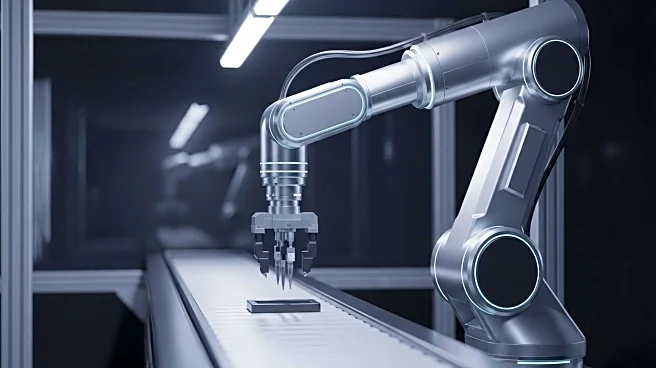What's Happening?
The Driver Alcohol Detection System for Safety (DADSS) project, a collaboration between the National Highway Traffic Safety Administration (NHTSA) and the Automotive Coalition for Traffic Safety (ACTS), is moving forward with its advanced alcohol detection technology. After 17 years of research, the project is licensing its technology to vehicle and parts manufacturers. This technology includes breath-based and touch-based systems that use infrared spectroscopy to detect alcohol levels. The breath-based system, which is 99.9997% accurate, is nearing commercialization, while the touch-based system is still in development. The project aims to integrate these systems into vehicles to reduce drunk driving fatalities.
Why It's Important?
The advancement of the DADSS technology is significant as it addresses the ongoing issue of drunk driving, which remains a major cause of road fatalities in the U.S. By potentially mandating this technology in new vehicles, the NHTSA could significantly reduce the number of alcohol-related accidents. This initiative also represents a substantial investment in public safety and could influence vehicle safety ratings, encouraging manufacturers to adopt these systems. The technology's development and potential implementation could save thousands of lives annually and prevent numerous injuries.
What's Next?
The NHTSA is expected to draft rules for implementing anti-drunken driving technology in new vehicles, following a 2021 congressional directive. The DADSS project is seeking industry partners to continue developing the touch-based system. As the technology becomes more widely available, it may become a standard feature in vehicles, influencing consumer acceptance and industry practices. The project's success could lead to further innovations in vehicle safety technology.
Beyond the Headlines
The implementation of DADSS technology raises questions about data privacy and the potential for false positives. While the technology aims to prevent drunk driving, it must balance accuracy with consumer privacy concerns. The project's success could also set a precedent for integrating other safety technologies in vehicles, potentially reshaping the automotive industry's approach to safety and innovation.










